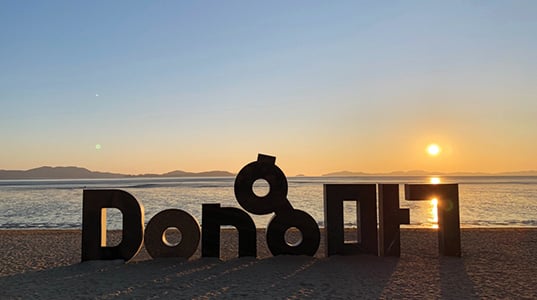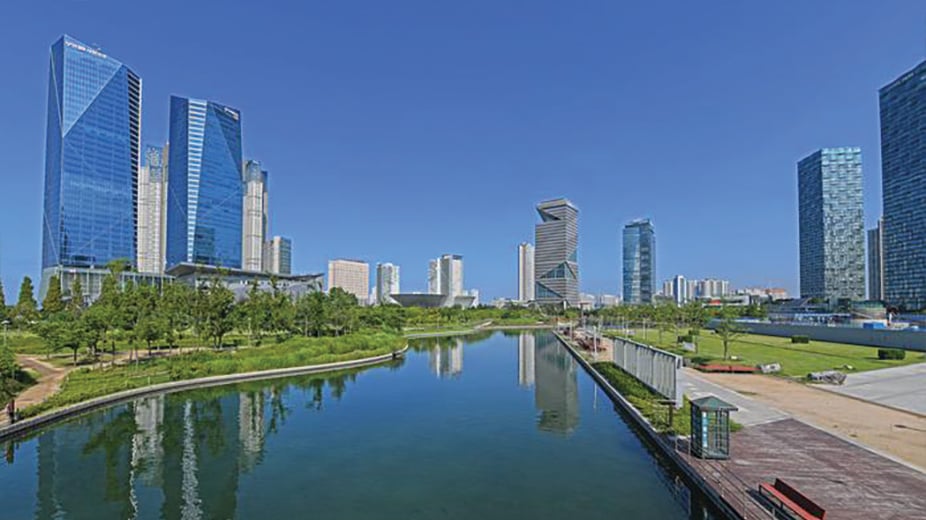
-
Incheon is the gateway to Korea, home to Incheon International Airport and the Incheon Port. It takes about an hour to reach the city from Seoul via subway or bus, so it makes for a perfect day trip destination from Seoul. Incheon was an open port, the site where modernity first came to Korea. Because of that, it still retains its 100-year-old port facilities, the first modern buildings in Korea, the foreigners’ club, and other cultures associated with concessions. Incheon Jung-gu’s Open Port area, in particular, functions as an open-air cultural and historical museum detailing the history of the Incheon Port, which opened in 1883. From cultural heritage to modern buildings and cutesy cafés, the area is home to sceneries straight out of period films, so it is beloved by photographers.
-
Ganghwado Island, called an “open-air museum,” is chock full of historical sites, from dolmen structures dating back to the prehistoric period to Goryeo and Joseon-era structures. It is also a beloved date spot for its retro-style art museums and cafés. Gyodongdo Island, connected to Ganghwado Island, is another throwback to the 1960s and the 1970s, particularly in its markets and schools. Seongmodo Island, which can be visited on the way out from Gyodongdo Island, is a well-known spot for sunsetwatching. If you want to see a different side of Incheon, head to Songdo. Songdo is a city of the future, with skyscrapers blending in seamlessly with wide lakes and green spaces. Hotels often offer great views of Songdo at night, while architecturally interesting buildings punctuate the scenery with their presence.
-
If you’ve had enough of the city, head to the far-flung islands of Incheon. From Sinsimodo Island of Bukdo-myeon, with a sculpture garden on a beach reachable in 10 min from Yeongjongdo Island, to Palmido Island, site of the first lighthouse in Korea; Seonjaedo Island, home to Mokseom Island, CNN’s choice for the most beautiful island in Korea; and Baengnyeongdo Island, the northernmost island of Korea requiring 4 h of traveling with a high-speed craft, the 168 islands of Incheon offer beautiful respite from your daily life.
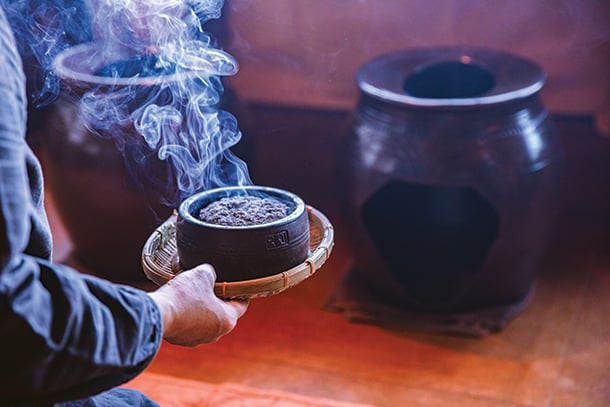
Ganghwado Island is famous for its 6-year ginseng, rice, golden sweet potatoes, and mugwort, which enjoy exceptional quality thanks to the island's natural environment. These home meal replacement (HMR) products allow you an easy way to enjoy what Ganghwa offers.
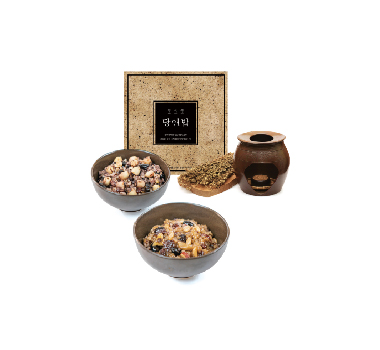 |
YACKSEOKWON HMR RICE
This HMR kit offers rice made with Ganghwa specialties like ginseng, sweet brown rice, and brown rice. Variants include “Nutritious Ganghwaseom Lotus Leaf Rice,” which is full of lotus leaves’ nutrition, nine Korean grains, and lotus leaves; “Nutritious Ganghwaseom Ginseng Rice,” in which Ganghwa ginseng is used to impart the rice with a unique texture and flavor; and “Ganghwa Potato Rice,” a sweet rice product with Ganghwa’s songnorang sweet potatoes. All Yackseokwon products are produced in the hazard analysis critical control point (HACCP)-certified facilities for safety. They can be stored at room temperature for up to 12 months.
|
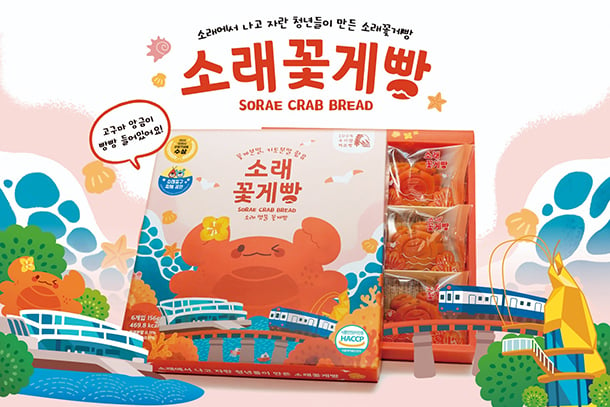
Sorae Port is an atmospheric port located quite close to Seoul, so it draws more than 5 million visitors yearly as one of Incheon’s premier tourist sites. It is also famous for its fish market, which serves fresh seasonal seafood. The most famous among them is blue crab. Sorae Crab Bread, which brings Sorae Port’s most famous specialty to mind, is a must-have souvenir for all visitors.
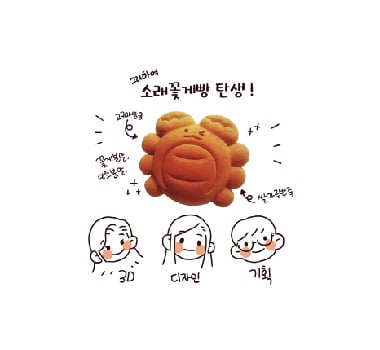 |
SORAE CRAB BREAD
This bread is inspired by blue crabs, which are the most famous specialty of Sorae Port. A mold shaped like a blue crab is filled with a dough made with 100% Korean rice flour, blue crab powder, and chitosan powder, baked, and filled with sweet potato filling. Its cutesy blue crab-illustrated packaging makes it a popular gift option.
|
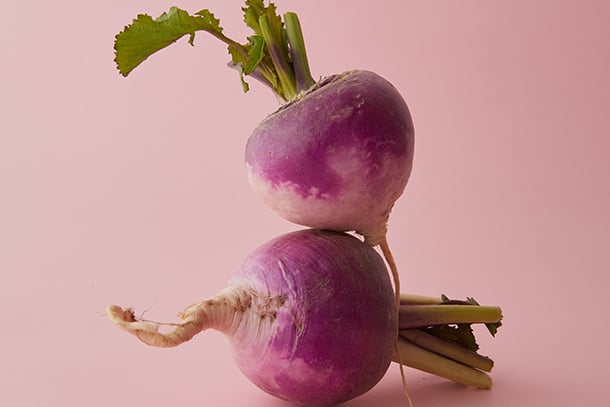
Turnips have been grown on Ganghwado Island for nearly 1,000 years, and only on the Ganghwado Island in the Korean Peninsula. The most famous turnip product from Ganghwado Island is turnip kimchi, made with Ganghwa’s high-quality salted shrimp and clean water. Turnips are also eaten stir-fried or braised, which bring out the sweetness of the vegetable.
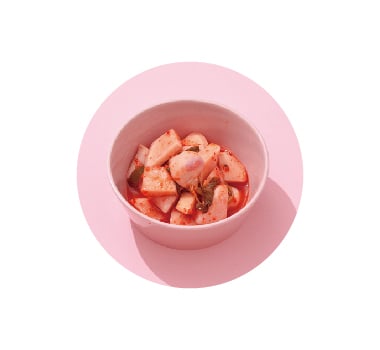 |
TURNIP KIMCHI
This turnip kimchi is made with Ganghwa turnips, green onions, and garlic grown by the mother-and-daughter pair, along with Ganghwa salted shrimp, deodeok from Jeju’s Hallasan Mountain, and sea salt sourced from Sinan. Their Pink Kimchi is made once every week in limited quantities and comes in cute packages perfect for gifts.
|
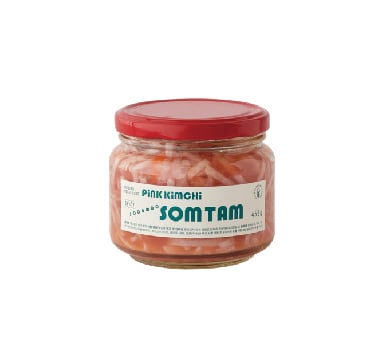 |
TURNIP SOM TAM
This is a reinterpretation of the iconic Thai dish, som tam. It consists of Ganghwa turnips and carrots, flavored with garlic, peanut, Thai chili, and lemon juice. Turnip Som Tam takes after its inspiration’s sweet and sour flavors but adds the sharp flavor of turnips to it. The more it ferments, the more the spicy broth will soak in, bringing the flavors deeper into the slices. It is recommended as a side dish to mitigate heavy and oily main dishes.
|
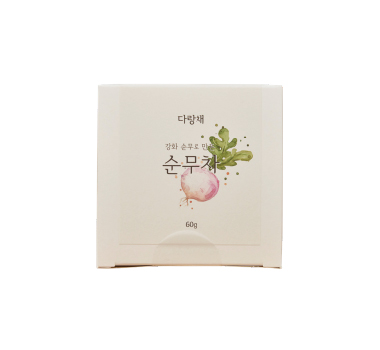 |
TURNIP TEA
A tea made from hand-sliced Ganghwa turnips, evenly roasted in a cauldron with no additives. Add two teaspoons to the kettle, pour hot water, and let seep for 30 s to prepare this deep and rich tea.
|
Q Your product list includes Som Tam, Pesto, and other products that cannot often be found elsewhere. Where do you get these ideas from? Well, turnips are, like napa cabbage and radish, known as ingredients of kimchi. But I felt it has so much more potential than just being pigeonholed into kimchi. Above all, as kimchi consumption continues to fall and more and more people are making do without kimchi, I began wondering if I could use Ganghwa turnip to make new and exciting menu items beyond kimchi. The inspiration came from the things I enjoy, like carrot rappe and green papayabased Som Tam. Turnip Rappe is an item that presented a new idea of enjoying turnips to those who had always known them as sharp-tasting vegetables. Turnip Som Tam likewise came about as a Thai-inspired alternative to conventional turnip kimchi. As for turnip greens, they are either used as kimchi or dried. Those take more time than you would expect. I was thinking about ways to use turnip greens right after harvest without requiring excessive processing, and I settled on the idea of making it into a Pesto.
Q Can you tell us a bit more about your future plans? For tourists, we will position ourselves as a local store and brand that can introduce Ganghwa turnips with some expertise. For locals, we will position ourselves as introducers of interesting menu items that capitalize on the potential of our local specialties.
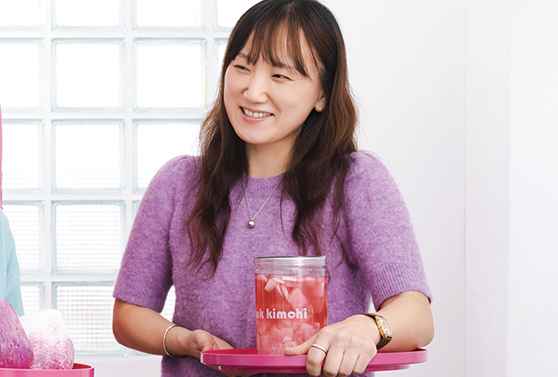
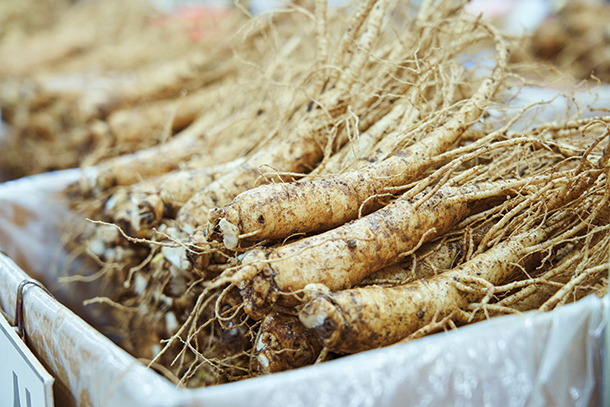
Ganghwado Island, being surrounded by the sea and sea breeze, offers a cool oceanic climate, silty loam, and clay soil, which are perfect conditions for ginseng cultivation. This is why the 6-year ginseng grown in Ganghwado Island is said to be the best of the best. Ganghwa ginseng is available in a variety of forms.
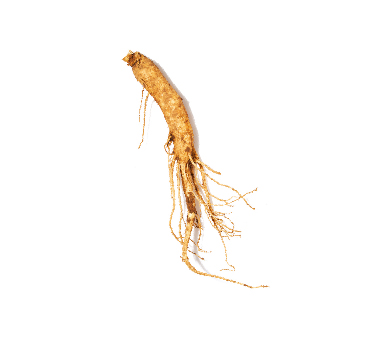 |
6-YEAR GINSENG
6-year ginseng has firm flesh, strong fragrance, and high saponin content. Because Ganghwado Island presents ideal conditions for ginseng farming, it is the only place in Korea that can grow 6-year ginseng. Ganghwa Ginseng Center offers ginseng grown by hand at lower than the market price.
|
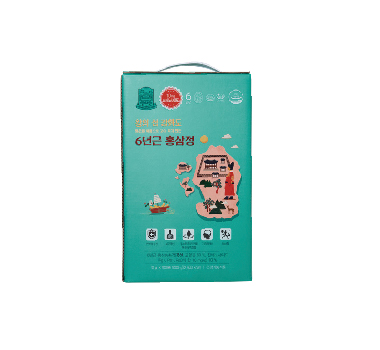 |
6-YEAR RED GINSENG CONCENTRATE
These sticks contain 6-year ginseng, steamed and dried with nutrients intact. The concentrate is then mixed with sugar-fed honey to balance nutritional benefits and taste. The health benefits of these sticks, which include immune-boosting and mitigating fatigue, can be carried and enjoyed anywhere.
|
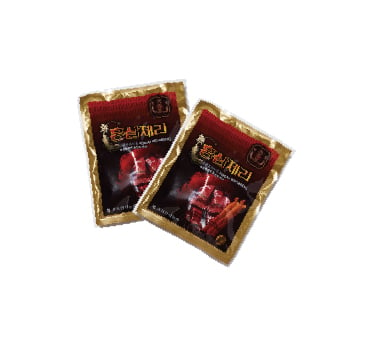 |
RED GINSENG JELLY
This jelly-like product can be enjoyed as a snack, even for those who do not like the red ginseng’s bitter taste. It is made with 6-year red ginseng and agar for a chewy texture.
|
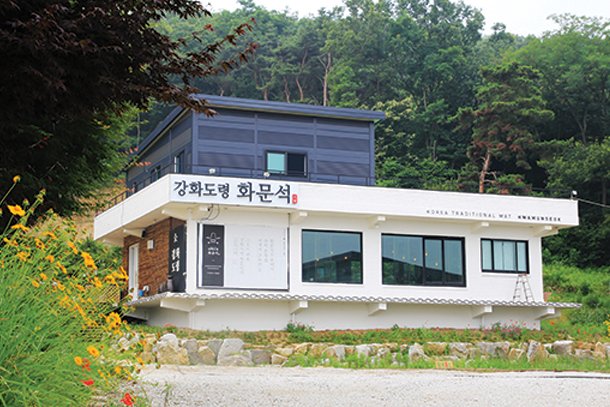
Hwamunseok means “flower-patterned mat,” which refers to a mat woven out of rush in flower patterns. The pores in the rush take in and breathe out moisture, so the mat helps maintain optimal humidity levels. Thanks to that quality, the Hwamunseok mat is cool in the summer and warm in the winter. Today, Ganghwado Hwamunseok is made not only into mats but also bags, hats, and baskets.
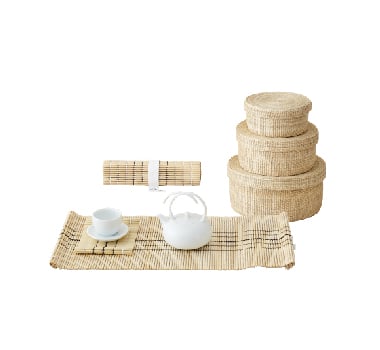 |
RUSH CRAFT
Rush, known in Korean as wanggol, is grown on Ganghwado Island. Ganghwa rush has a luscious and strong texture, flexibility, and structure, so handicraft made with Ganghwa rush is considered exceptional in quality. You can find items like bowls, coasters, tea mats, and cushions made with rush.
|
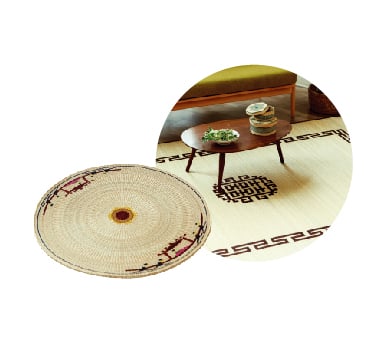 |
HWAMUNSEOK MAT
Hwamunseok mat refers to flower-patterned mats made by weaving dyed rush by hand and cutting them according to patterns. It was an essential item for Koreans and their sitting culture. Hwamunseok mat was used to mitigate the heat in summer, thrown over the maru (wooden-floored hall), and as an interior ornament. These mats come in a variety of sizes and designs, and you can even customize your own.
|
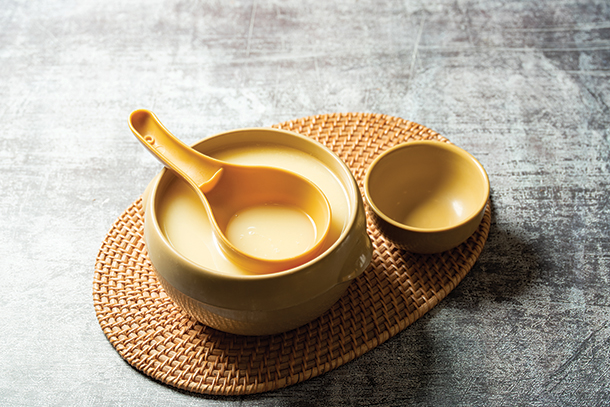
This makgeolli (unrefined rice wine) has served as Incheon’s favorite for 80 years. Named after “Soseong,” the old name of Incheon given during the reign of King Gyeongdeok of Silla, Soseongju has excellent quality and flavor because it only uses white rice and yeast that has been allowed to incubate for a specific period. Soseongju downplays the mouth-drying and sweet flavors of standard makgeolli and offers, instead, deep savory flavors, realized through fermentation in optimal conditions.
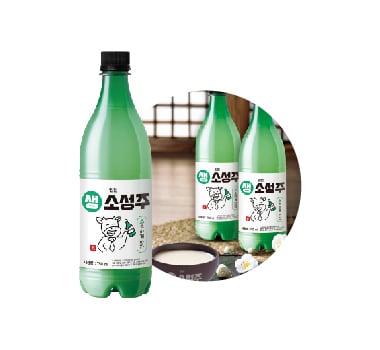 |
INCHEON TAKJU SOSEONGJU
Incheon Takju, the producer of Soseongju, was the first to launch rice makgeolli in 1990. It has been making Incheon’s favorite makgeolli for a long time, carrying on the tradition of Incheon's brewing industry. Soseongju, Incheon Takju’s flagship product, is known for its gentle and savory flavors realized by increasing the duration and stages of fermentation.
|
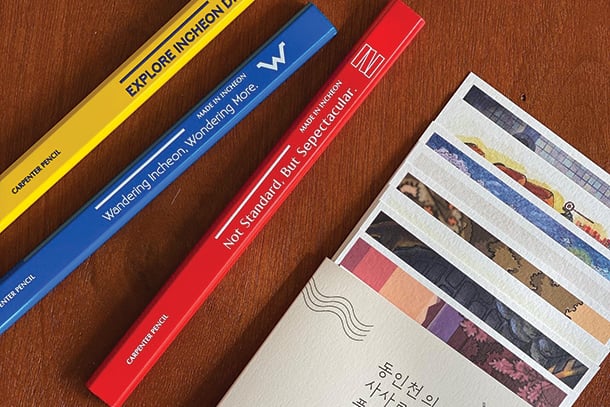
Dongincheon, East Incheon, houses the Open Port, which functions as an open-air museum full of historical, architectural, and cultural sites. It is home to numerous buildings constructed in Japanese and modern styles after the 1880s and cultural facilities. These places in Dongincheon, with their own history and stories, are illustrated by the young artists of Incheon on postcards, book holders, and other stationery.
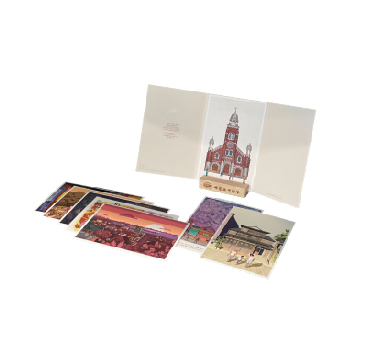 |
DONGINCHEON POSTCARD SET
These postcards capture the famous sites and sceneries of Dongincheon, such as the Dap-dong Catholic Church, Jemulpo Gurakbu, and Jayu Park at sunset. This set includes eight postcards created by eight artists, along with three types of pencils.
|
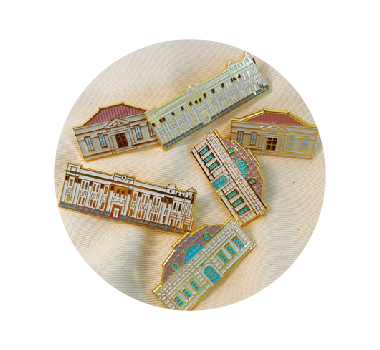 |
MODERN ARCHITECTURE BADGES, 3 TYPES
These badges are inspired by modern buildings of particular value and beauty in Dongincheon. These small badges bring beautiful details like round windows, bell towers, and sharp domes alive and work perfectly as accessories to be worn on one’s hat or eco bags.
|
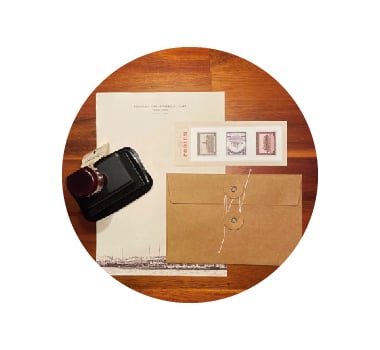 |
INCHEON OPEN PORT LETTER PAPER SET
This is a set of letter papers and three post stamps that depict how Incheon Open Port used to look in the early 1900s.
|
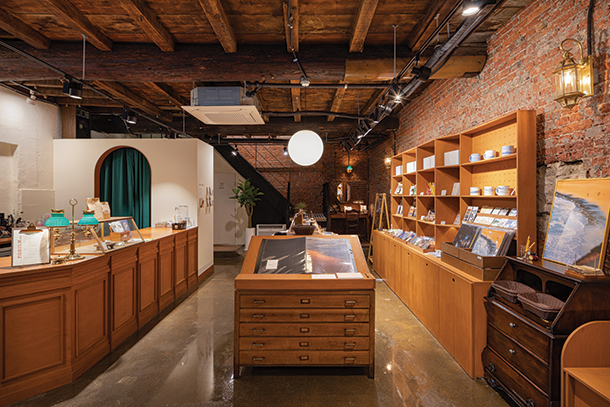
Soah Incheon is a brand brought together by creators born and raised in Incheon who wanted to introduce through fragrance the charming sites and sceneries of Incheon. They knew that a good scent has the power to instill good memories and experiences in people, so they created this product as a way for Incheon to be remembered with a good scent. Starting with diffusers, the brand plans to expand its range of products to include a variety of fragrances that reflect the characteristics of Incheon's iconic locations.
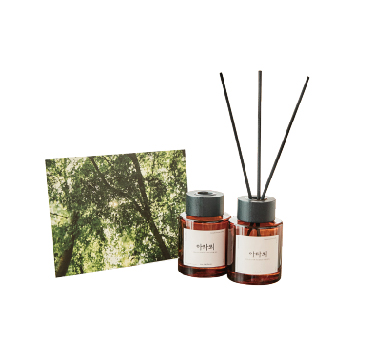 |
ARAMOE DIFFUSER
This scent, named “Aramoe,” captures the green and peaceful atmosphere of Jayu Park, which has stood as a longtime feature of Incheon’s old city center. “Aramoe” refers to mountain and sea in Korean, reflecting Jayu Park’s surroundings. A perfumer with 10 years of experience has developed a unique scent with cool herbal notes, earthy patchouli, soft sandalwood, etc.
|
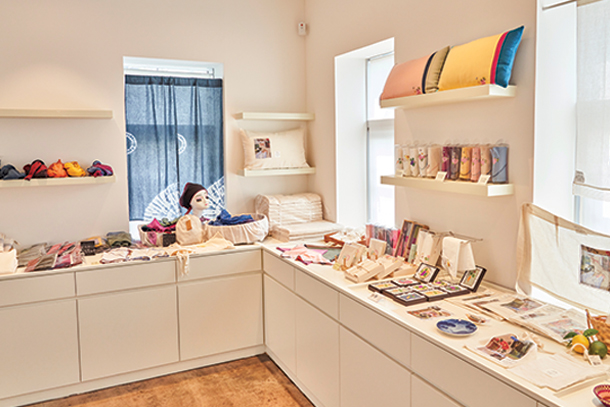
Sochang refers to a type of fabric made with cotton thread. It is quite hygienic, thanks to its being quickdrying and stain-resistant, and the more times it is boiled and washed, the more absorbent and durable it becomes. Sochang has recently undergone a resurgence as an eco-friendly fabric, with more and more products being made using the fabric.
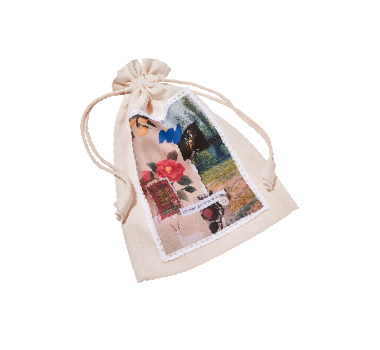 |
STRING POUCH
This product is made by Ganghwa Art Library, the first private art library in Ganghwa and the publisher of exhibitions and books, using collage techniques. There are five types of products with variations in materials, such as pictures, photographs, stickers, and buttons.
|
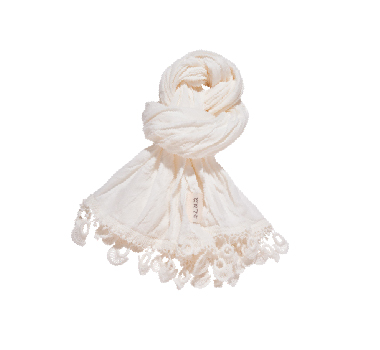 |
SCARF
Nonfluorescent sochang and thread are used to make this scarf, which is boiled and refined three times to make it soft and light. It showcases sochang’s unique natural hue and delicate lace.
|
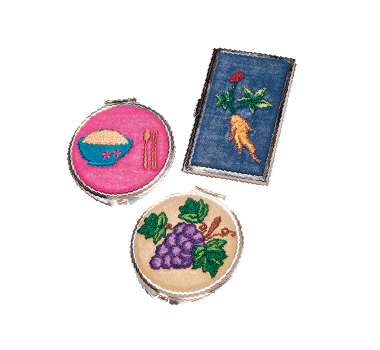 |
DOUBLE-SIDED EMBROIDERED MIRROR & BUSINESS CARD CASE
These mirrors and business card cases are decorated with gently dyed sochang fabric, upon which Ganghwa specialties like ginseng, turnip, and rice are embroidered.
|
 |
BIB & FOOTWRAP
Sochang fabric is hygienic thanks to its being quick-drying and stain-resistant. Bibs and footwraps made with sochang benefit from this quality, and the more times they are boiled and washed, the more absorbent and durable they become. Made by artisans with expertise in natural dyeing, art instruction, and sewing expertise, these products showcase refined and elegant designs.
|
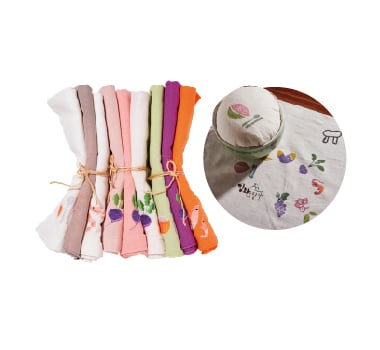 |
HANDKERCHIEF
Because it is soft, absorbent, and hygienic, sochang is perfect for handkerchiefs. Sochang handkerchiefs can be found in a variety of colors, featuring elaborate designs made with embroidery and patchwork. Popular designs integrate Ganghwa specialties like turnip, ginseng, or rice in the form of stamps or embroidery.
|
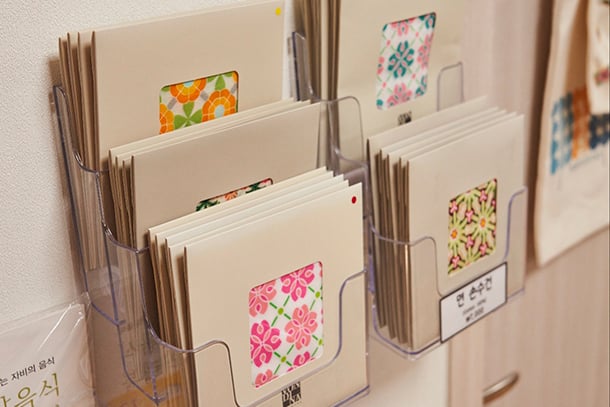
Templestay programs are an ever-popular way to experience Korean Buddhist culture and nurture your body and mind. Incheon’s Lotus Lantern International Meditation Center and Jeondeungsa Temple are great places to enjoy Templestay near Seoul. Temples that offer Templestay programs also offers souvenirs that draw upon the traditions of Buddhism to create contemporary designs.
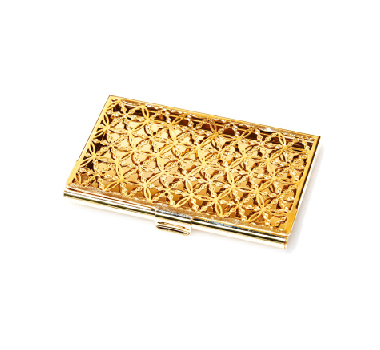 |
KKOTSALMUN BUSINESS CARD CASE
This business card case is inspired by kkotsalmun, a flower-patterned door that showcases Korean aesthetics through its elaborate and elegant touches. Its malfunction-free opening and closing functions, soft grip, and light weight make it quite practical. The interior is spacious enough to store 20 business cards.
|
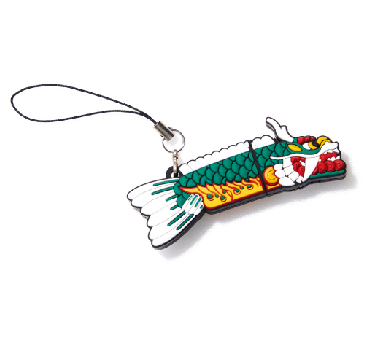 |
WOODEN FISH USB STICK
A wooden fish is a sculpture symbolizing constant vigilance and dedication to enlightenment. USB memory sticks are often lost because of their small sizes, but this Wooden Fish USB Stick cannot be missed thanks to its distinct form and colors. It has a generous 64GB capacity.
|
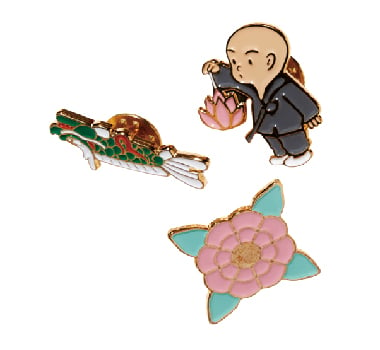 |
BADGES, 3 TYPES
These three pin badges are shaped like a cute boy monk, an elegant lotus flower, and a colorful wooden fish, bringing together Buddhist culture and traditional Korean beauty. Their vibrant colors and three-dimensional design make them a great addition to any bag, hat, or T-shirt.
|
Dongmak Beach is a great place to go for a swim, thanks to its cozy sand beach and lush pine forest. At high tide, you can bathe in the pristine waters, and at low tide, you can see a variety of shellfish and sea creatures such as sentinel crabs, Korean cyclina clams, and blow lugworms on the vast tidal flats. Next to Dongmak Beach is Bunori Fortification, a beloved sunset spot for Ganghwa. The view from the coastal road connecting Janghwa-ri to Dongmak-ri is also very beautiful, with plenty of pretty cafés by the road to stop by and enjoy a cup of coffee with the view.
